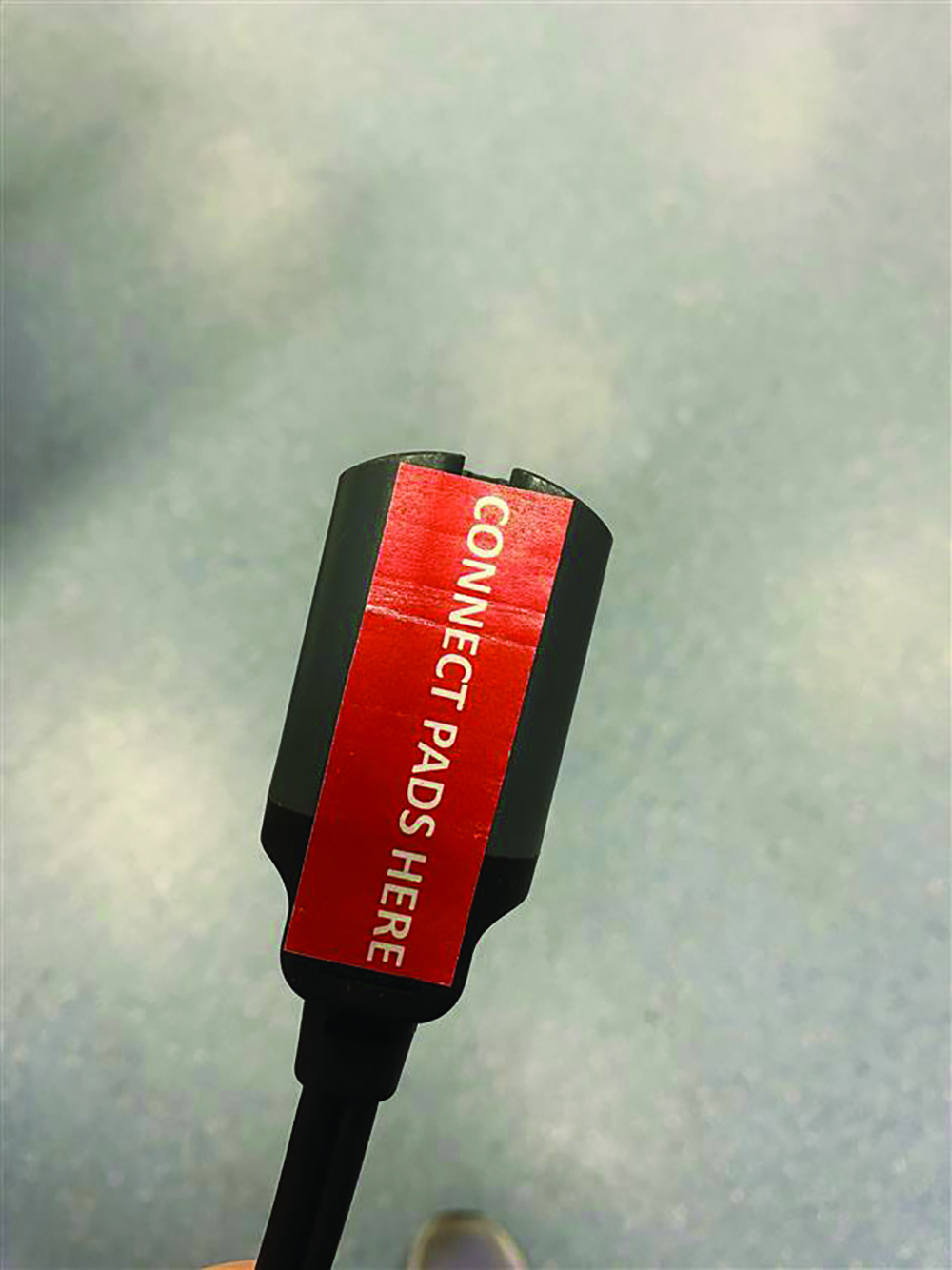
Cardiac arrests, though rare in District General Hospitals (DGHs), require effective team performance. Studies show that each minute of delay in delivering the first shock during out-of-hospital ventricular fibrillation cardiac arrest decreases the probability of survival to discharge by 6% [1].
During our monthly in-situ simulation program, we identified a potential delay to shock delivery with delayed connection of defibrillator pads. Using the SEIPS framework [2] we aimed to explore both equipment and workflow inefficiencies.
Simulations were conducted to quantify the delay, using a CPR training manikin, defibrillator training pads, and staff’s own ward defibrillators. Thirty staff members participated, with a range of seniorities and specialities, all holding current Immediate or Advanced Life Support certificates (and hence trained to use a defibrillator).
Time was recorded from pad application to connection and activation of the defibrillator in seconds. The primary outcome was connection time, with the aim of all staff carrying out the task in under 60 seconds. Secondary outcomes included perceived cognitive load, assessed via informal debriefs.
Repeated cycles introduced system-based interventions to reduce connection time. Staff roles and experience levels were similar across cycles, with 30 different participants in each.
The first cycle revealed an average connection time of 62 seconds (range: 10–205 seconds). Staff had no difficulty placing pads but consistently struggled to locate the connection port. In the second cycle, coloured labels (“attach pads here”) were added (see Figure 1) with the aim of making identification of the connection site easier. Surprisingly, average connection time increased to 96 seconds (range: 6–300 seconds) in this cycle.
Debriefs with staff members revealed not only a significant cognitive load, but also real-life stories of how difficulty connecting pads had impacted actual cardiac arrests – with some staff expressing significant guilt over not knowing how to connect the pads at the time.
This study revealed that the task of pad connection was a common difficulty for staff, and that simple interventions were ineffective at reducing time to pad connection. A decision was subsequently made at trust level to procure pre-connected pads to eliminate the task entirely.
By addressing the issue at a system level - through redesign rather than retraining - we aim to improve patient safety and reduce staff cognitive burden in the long-term.
This project is highly transferable to other hospitals and demonstrates the value of a systems-based approach to simulation learning and quality improvement.
As the submitting author, I can confirm that all relevant ethical standards of research and dissemination have been met. Additionally, I can confirm that the necessary ethical approval has been obtained, where applicable.
1. Stieglis R, Verkaik BJ, Hanno LT, Koster RW, van Schuppen H, van der Werf C. Association between delay to first shock and successful first-shock ventricular fibrillation termination in patients with witnessed out-of-hospital cardiac arrest. Circulation. 2024;151(3). doi: 10.1161/CIRCULATIONAHA.124.069834.
2. NHS England. SEIPS quick reference and work system explorer. Version 1. [Internet]. 2022 [cited 2025 Apr 14]. Available from: https://www.england.nhs.uk/wp-content/uploads/2022/08/B1465-SEIPS-quick-reference-and-work-system-explorer-v1-FINAL.pdf
Acknowledge: Billy Perrin, Resuscitation Lead at Homerton Healthcare NHS Foundation Trust
